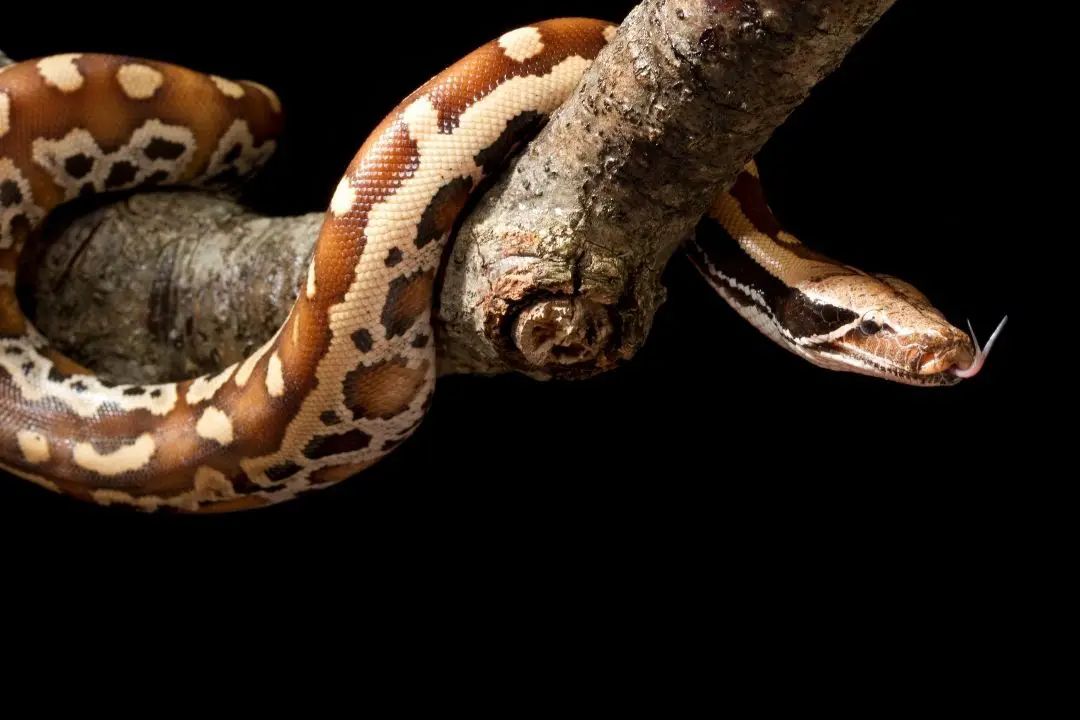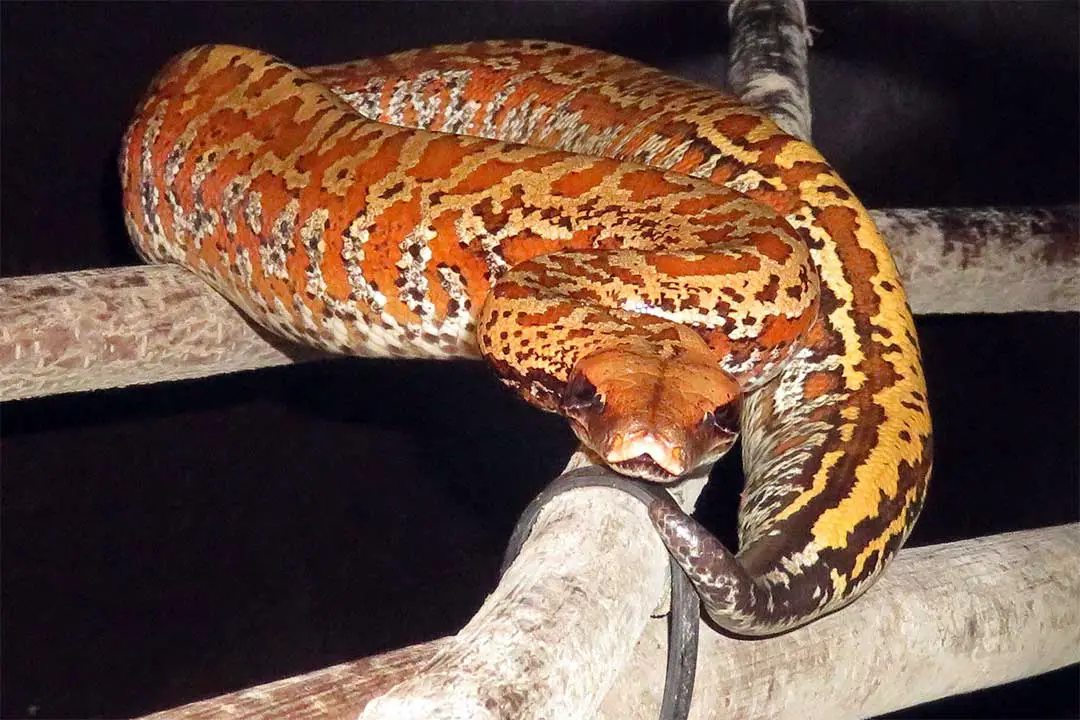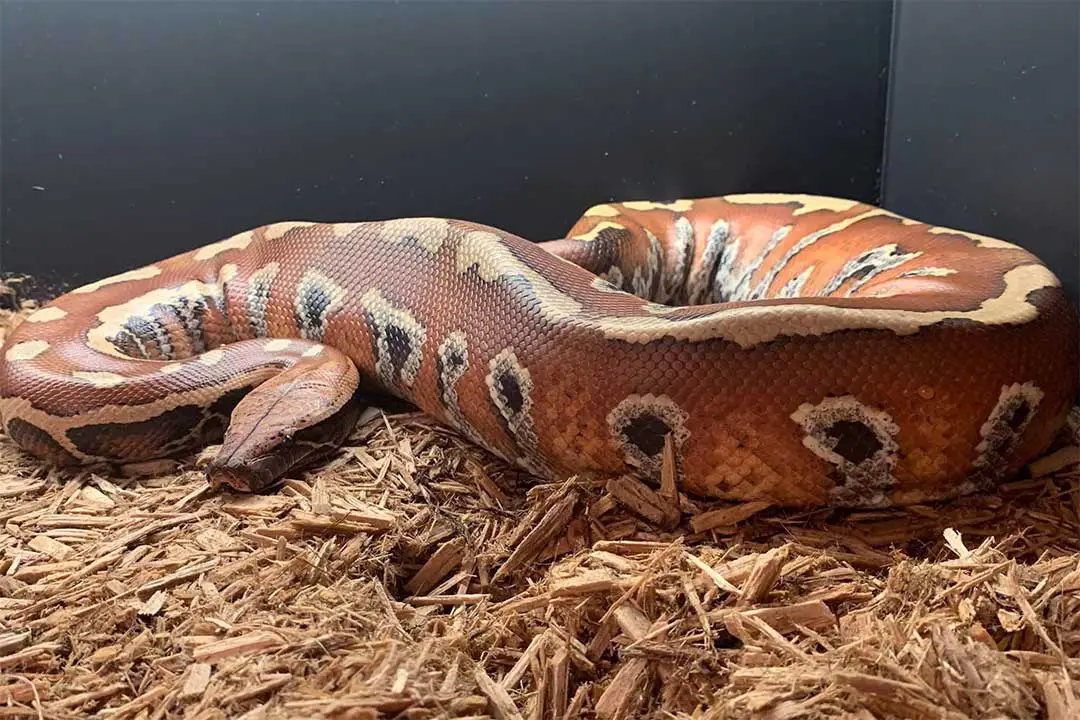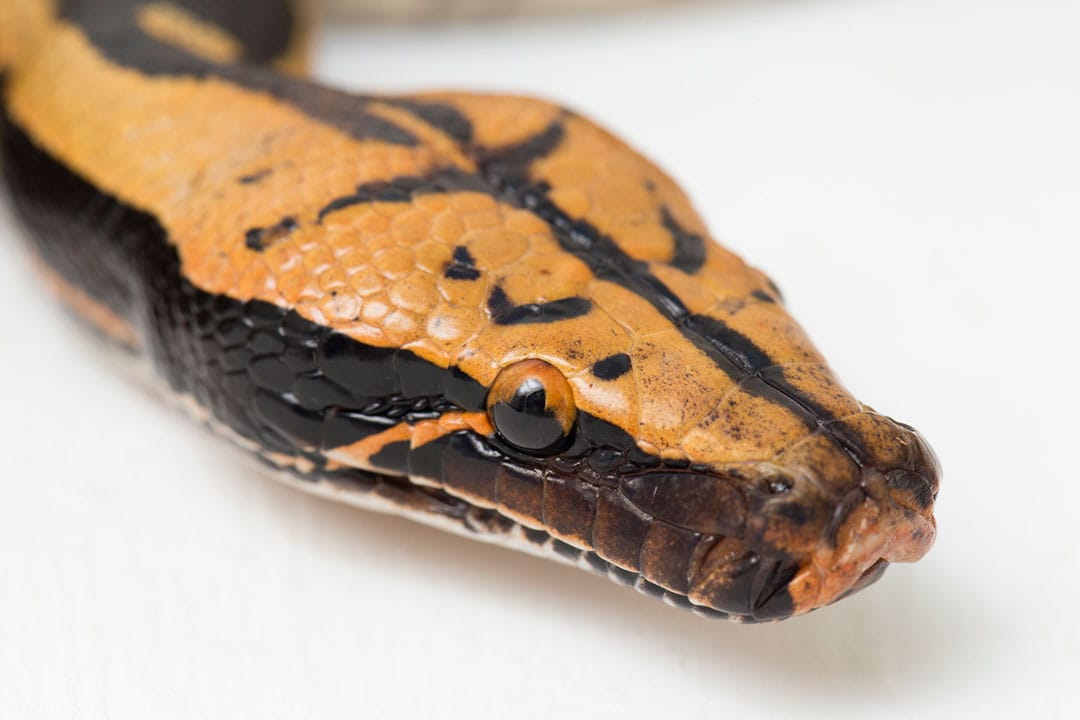Blood pythons (Python brongersmai) used to be known for having a terrible temperament.
These were stressed wild animals and captive-bred snakes are typically much more docile, see my blood python care guide for more info on their enclosure setup & requirements.
These snakes have been bred for both temperament and color.
You can find many beautiful colors and pattern morphs out there beyond the classic red blood python. this list will go over a few so you have an idea of what is available.
1. Albino
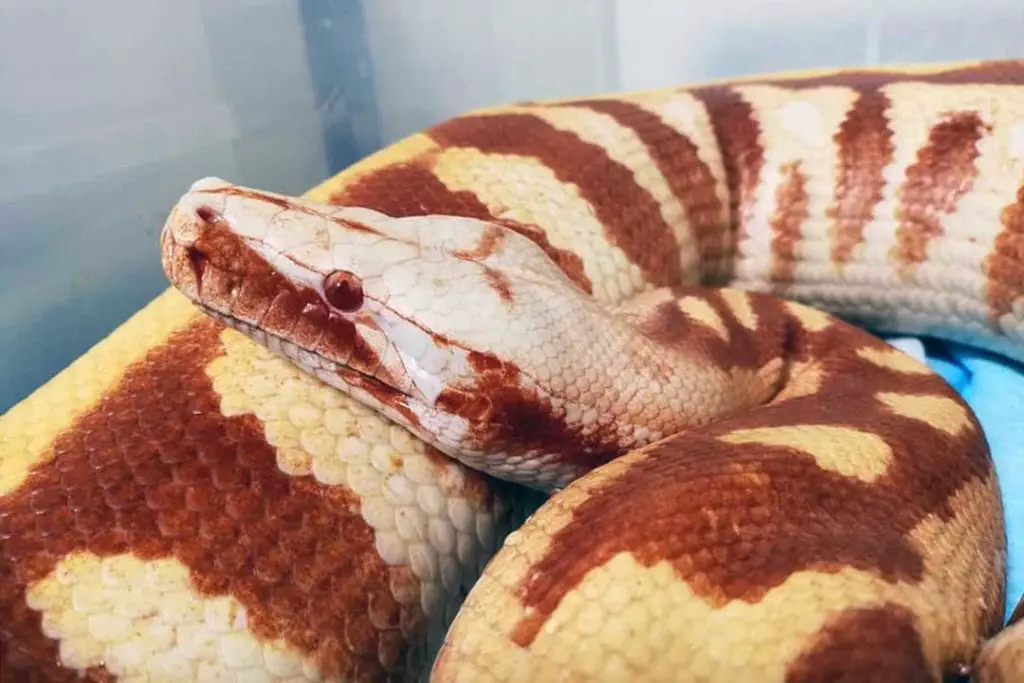
Albinism is a recessive gene that is caused by a lack of melanin. There are a few strains in the blood python with the major differences being between T+ and T-.
This refers to the presence or lack of Tyrosinase which is an enzyme needed for melanin production. T- snakes are typically lighter while T+ snakes can be more orange or yellow in tone.
They are not compatible, so if you breed a T+ and a T- you will get normal-looking babies that carry one copy of each kind of albinism.
There are a few specific lines of T+ albinos like cherry bomb, tomato bomb, and blonde. Each of these has a slightly different look and may be more red or brown depending on the age of the snake.
Make sure you look at pictures of the parents if you want to see what an adult may look like. T- snakes tend to be lighter in color and may have light orange or pink tones to their bodies.
Some genes can make them have lighter tones or be nearly all white.
2. Matrix
Matrix is a co-dominant gene that can be difficult to tell apart from a normal. The main change is to the pattern which will be blocky or pixelated.
The tongue will typically be pink as well. As a co-dominant gene, this has a super form. These snakes are referred to as ivory and will be 90% white with patterning down the spine.
The exact amount of patterning will depend on the snake. Matrix is a good gene to use as a foundation and is nearly as common as goldeneye.
3. Batik
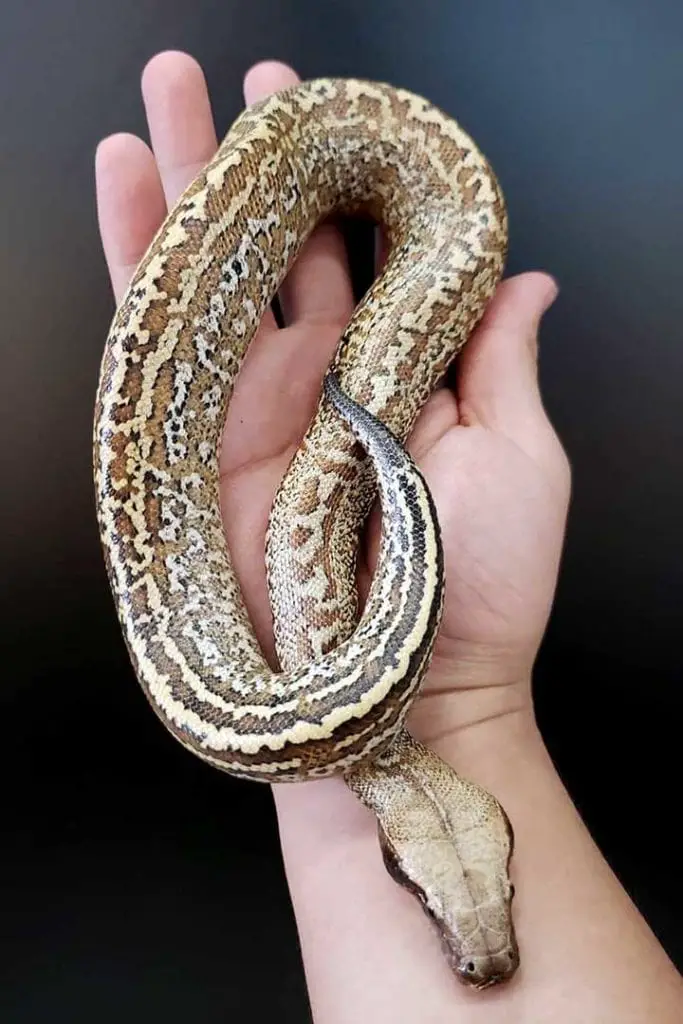
Batik is a co-dominant gene that produces an altered pattern. The pattern is broken up and can produce some striping down the back and faint lines along the sides.
This can produce some very interesting snakes when combined with other morphs. Since it is co-dominant, about half of the snake’s offspring may have a visual batik appearance.
4. Goldeneye
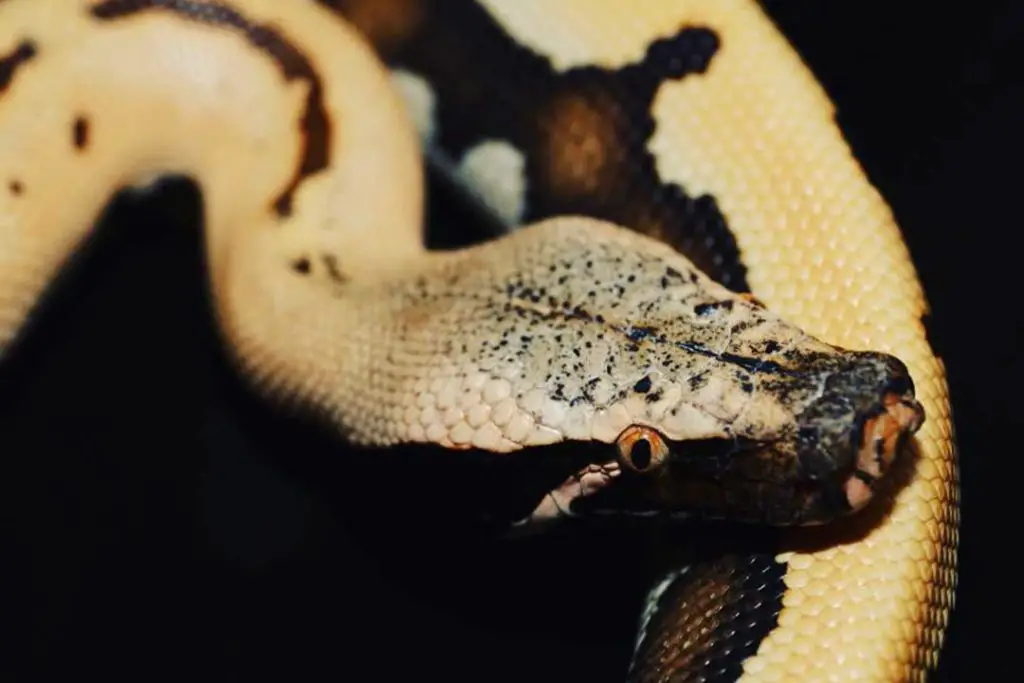
This is a co-dominant gene that can alter the pattern and color of the snake.
The Sumatran short tailed python frequently has a thick dorsal stripe. Many of these snakes will have expanded yellow portions or reduced red, but it can depend on the animal.
Magpie is the name for the super or homozygous form of goldeneye. Magpie snakes have a cream or light orange color with some remnants of dark patterning on its own.
This gene can be combined with others to create unique morphs. For instance, combining an albino gene with the super form makes an albino magpie. These snakes will have very light colors and reduced patterning.
5. 007
007 is a combination of the goldeneye and matrix genes.
These snakes tend to a cream, beige, or light brown background color with reduced patterning from the matrix gene.
They can have black or brown patterns. Since this is a combination gene, appearance can vary wildly.
6. Pixel
Pixel is another common combination. It is seen in snakes that have the goldeneye and batik genes.
This results in snakes with the batik patterning on the sides and an orange or yellow tone on the back. Some snakes can have a pixelated look to their patterning, but it depends on the animal.
7. Stripe
There are a few lines of striped genes in blood pythons. This is a pattern alteration that can result in solid or broken stripes along the back.
There are both line bred snakes that have been selected for stripes and snakes with a co-dominant gene that causes stripes.
There are a few known lines available such as the CBE line, VPI line, and PE line. These may not be available everywhere. Some UK breeders have their own lines for instance.
8. Hypo
Hypo is the short name of hypomelanism. This means the snake has reduced melanin. Adults will lack any intense dark tones.
They can be a mid-brown or show more yellow and red tones. This will depend on the snake and the line it is from.
9. Aztec
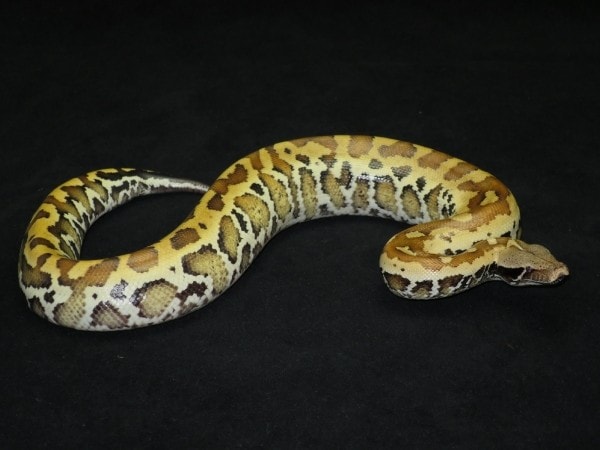
The Aztec gene is currently found only in the UK.
It is either a dominant or co-codomiant. This is a pattern and some color change. The back is typically a tan, light brown, or yellow with brown patterning.
The sides are typically lighter and have brown blotches with some dark scales.
10. Pollen
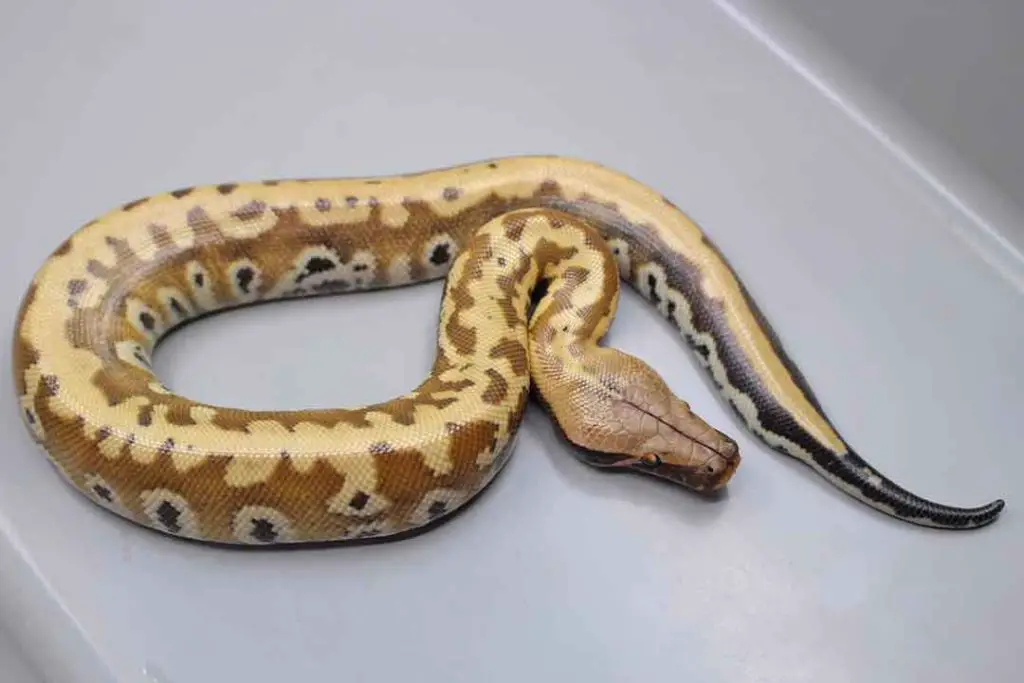
This is a co-cominant morph that is still fairly new. The basic form of pollen with one copy of the gene can be hard to visually identify.
Generally, they have some striping along the back and the patterns on the sides seem to reach for the dorsal stripes. The super form is called flower.
11. Sunder
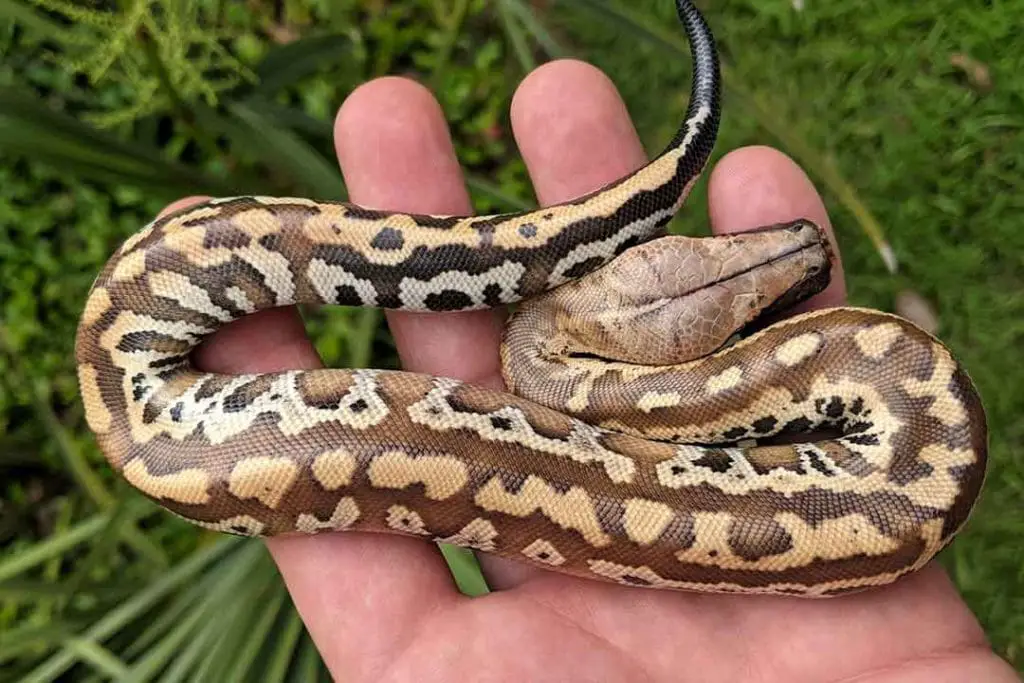
This is another new gene in blood pythons. Sunder breaks up the pattern.
It was first noticed in a pairing that included the goldeneye gene, so it has some effects on other pattern-changing genes. It breaks up the pattern and allows more of the background color to be seen.
Since this is a subtle gene, it can be hard to notice if an animal only has a single copy.
12. Pied
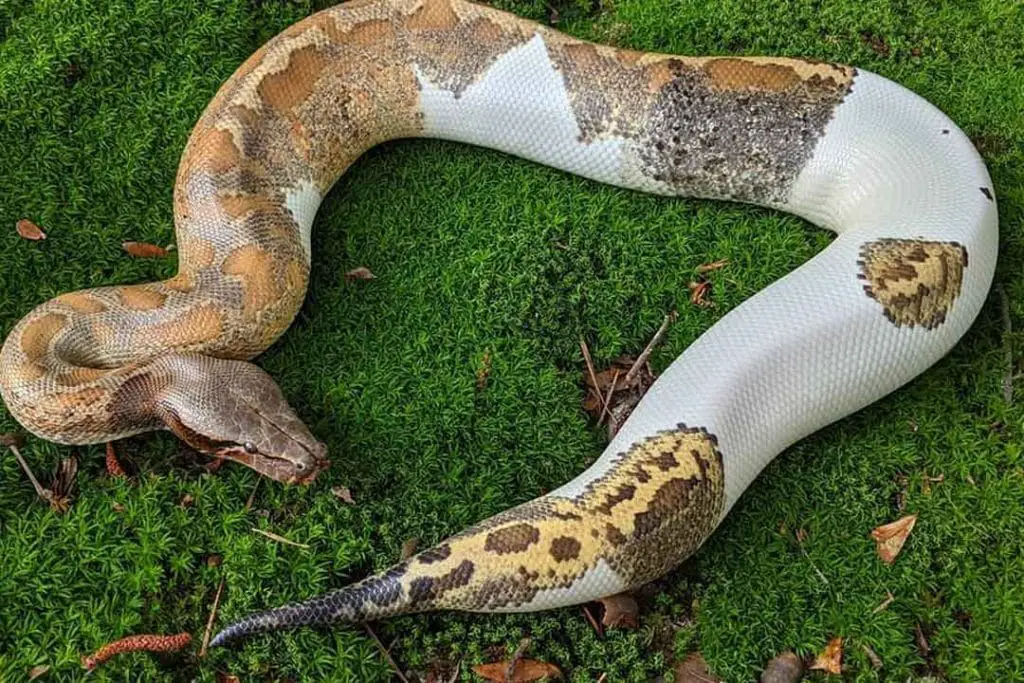
Much like other snakes, blood pythons have a pied gene. This cause patches of white to break up the snake.
Some snakes can only have a few small patches of white while others will have mostly white with patches of the normal colors along the body. This is still being proved out.
13. Electrostatic
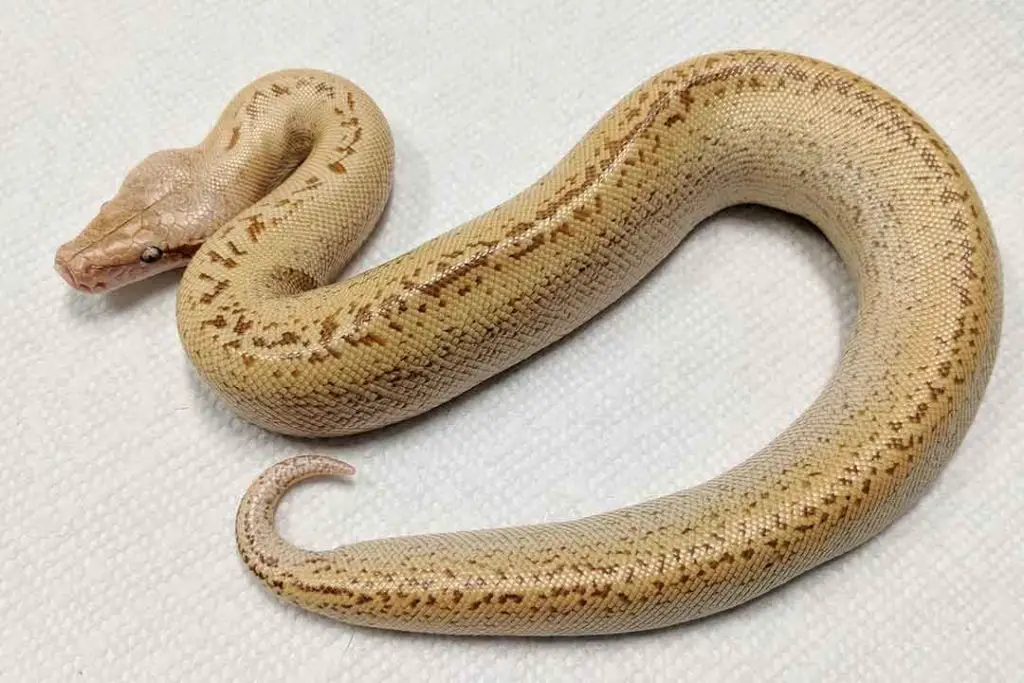
This is a combination morph. A snake with this name has T+ albino, batik, and two copies of the matrix gene to produce an ivory.
This is a recessive, a single co-dominant gene, and two copies of another co-dominant.
These snakes are pale tan with a very faint and broken up pattern. Snakes that do not have the albino gene are called white lightning.
Other Genes
New and unique genes and combinations are always being found for the borneo short tailed python.
Since many morphs in blood pythons are caused by co-cominant genes, it may take a few breeding before a new gene is noticed.
Many of the single copy versions have a minor visual appearance that are only proved out later.
Some may also look similar to other genes even if they are not compatible.
Keep an eye out since many breeders are working on new projects, captive breeding efforts have been increasingly interesting, always buy captive bred animals.
Conclusion
We hope this taught you a bit about the blood python morphs out there.
Since there are so many that are restricted to specific countries, you may be able to find python curtus morphs that are only available in your region.
If you know of any interesting morphs or combinations, please tell us in the comments below.
We also welcome any other questions or comments you may have about short tailed pythons, python breitensteini or other species.
